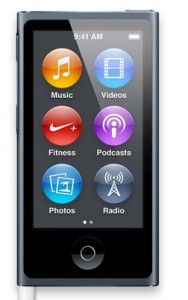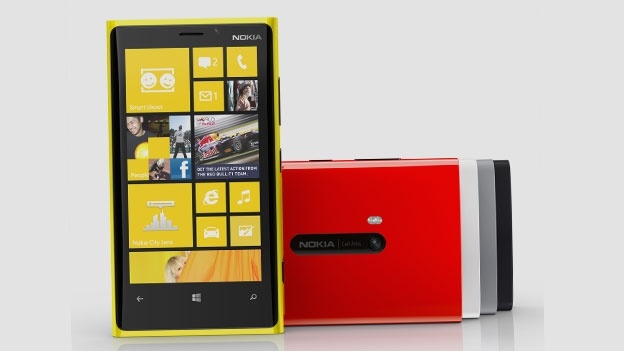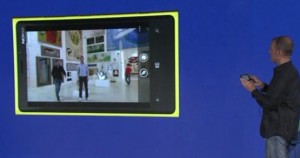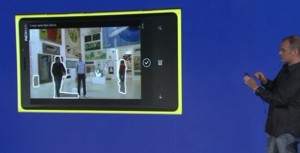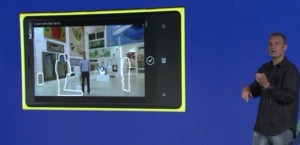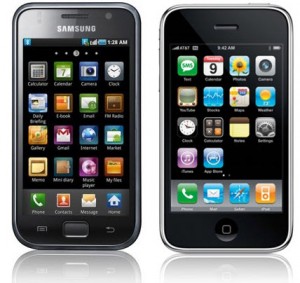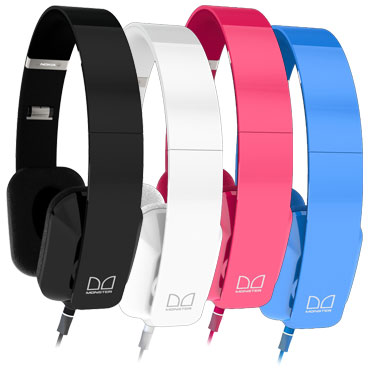Last week, Nokia announced its new flagship mobile phones – the Lumia 920 and 820. Although the hype was certainly there, the interest was not and Nokia’s stock continued to drop. Tonight, Apple showed off its newest iPhone and musical device/software refreshes. Hype was certainly there, interest and wow factor…not so much and the really annoying thing is, I predict its stock will still keep rising.

Led by new CEO Paul O’Grady…I mean Tim Cook (seriously they really do look like each other), Apple’s September event kicked off as usual with some statistics on how well the fabled glass and metal products are selling around the world. Awesome. A few minutes in and the iPhone 5 was unveiled. The naming of the device is totally logical seeing as it is the sixth iPhone and therefore iPhone 5 is the obvious name for it. To those of you that saw the leaked images and rumored designs of this new device, it is exactly the same. Like with every iDevice launch, there is little to no surprise as with the help of the Internet everyone knows exactly what to expect. The non-surprises don’t end there; the new iPhone has a 8-megapixel camera that improves on the one found in the 4S with some new technologies that make shooting in the dark or finding the nice bokeh background easier; it certainly took me by non-surprise. The new iPhone also has LTE capabilities, meaning a faster 4G antenna. For those of you who aren’t familiar, 3G was like broadband for the mobile phones, 4G/LTE is like fiberoptics allowing a very quick data connection to your mobile when you are in a supported area. The iPhone 5 will also have Bluetooth 4.0 and of course iOS 6, the features which were covered in one of my previous articles. Oh and a quicker A6 processor. All these updates seem a bit dull and expected but wait! There are a few new things the iPhone 5 offers that lift it a step up from dull to mundane.

The new iPhone 5 has a redesigned dock connector. Gone are the days of the nine year old (seriously that long ago?!) 30-pin iPod connector and in is the new “Lightning” connector. The cable still uses USB but one can probably assume that it will be 3.0 with the possibility of there being a Thunderbolt alternative. Given the naming of the new connector, I reckon this is very likely. The new connector is also reversible meaning that it is the same when rotated 180 degrees reducing the possibility of a broken port when fumbling around the charger in the dark after a night out.

And finally, the iPhone 5 has the long rumoured and debated larger screen. Measuring in at 4 inches diagonal, it is still one of the smaller screens in the world of touchscreen smart phones. Apple’s reasoning being this is that it wishes to preserve the fact that a phone should still “fit” in ones had. In order to maintain the iPhone 4’s Leica-Camera-like form factor, the iPhone 5’s display is merely longer with 1136 pixels across as opposed to 960. Still shy of the 720p displays that many smartphones are now sporting. Heck the Lumia 920 has a whopping 1280×768 in a 4.5″ display. That’s 35% more pixels. The display is now 16:9 widescreen aspect ratio and many apps are being updated to support this new size. It seems that this time round, Apple was more focused on the form factor because the iPhone 5 has a metal back and is much thinner than the 4/4S but at what cost? Is the 4 inch display really enough to rival the competition?

After the iPhone 5 came iTunes. iTunes has been updated to version 11 with a redesigned user-interface, a simpler store that is the same across all Apple devices and more social integration. By that I mean there is a “Like” button attached to almost everything. The new iTunes needs to be used rather than described as it is more about the interface rather than features. The only actual new feature seems to be the iCloud integration for those into backing stuff up in the sky and even that isn’t very new as everyone knew it was coming anyway.

Another non-surprise was the iPod Touch. With every release of an iPhone, the iPod Touch models also get an update to keep up with the apps that will be inevitably developed with the iPhone as a priority over the iPod. This time was no different. The new iPod Touch models are updated with the new 4 inch display and better cameras front and back. The processor has also been updated to the A5, a step down from the A6 in the iPhone 5. And like it’s mobile bigger brother, the iPod Touch sports the new Lightning connector. It comes in various colours and has a pop out bit to tie a strap to much like a pocket camera.

Finally, two refreshed products that I genuinely did not see coming. First the iPod Nano. Completely redesigned and now looks like someone nicked an iPod Touch from Tinker Bell. It has a 2.5 inch touch screen and also a home button not dissimilar to the one on the iPod Touch. The display is also multitouch. For the first time, the iPod Nano gets Bluetooth 4.0 which means better handsfree capabilities whether in the car or the gym. Aesthetically, the Nano looks shockingly like the Nokia Lumia range:
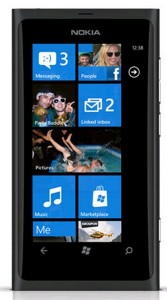

The last product was the Apple earPods. Redesigned earphones that will ship with all new iDevices.
So Apple has announced its new products and every year, my hype and excitement decreased. Probably because the smartphone market is so saturated and innovation is dwindling. It is hard to come up with something new without it being copied or ridiculously useless. The iPhone 5 was everything I expected and nothing more. When the iPhone 4S receives the iOS 6 update, it will be the same phone, just shorter. Frankly the only thing that grabbed anything that resembled my attention today was the iPod Nano getting Bluetooth. The iPhone still lacks NFC, the hardware has not improved to play audio at a remotely acceptable level through the speakers, the recording capabilities have not improved, the camera is much the same except for improved low-light conditions (which was absolutely necessary). Compared to the Nokia Lumia 920, which has PureView, PureMotion HD+ screen that can be used while wearing gloves, and Rich Recording that can record up to 140 dB without losing clarity, it’s clear where the real innovation lies.
People will naturally queue to get their hands on the iPhone 5 but I have a feeling that the numbers will not compare to when the iPhone 4 launched. A month or two ago, I stated that Apple had better pull it out of the bag or my next phone will be something different, thus severing my last tie with Apple. I am due an upgrade in November, guess it won’t be an iPhone anymore.
